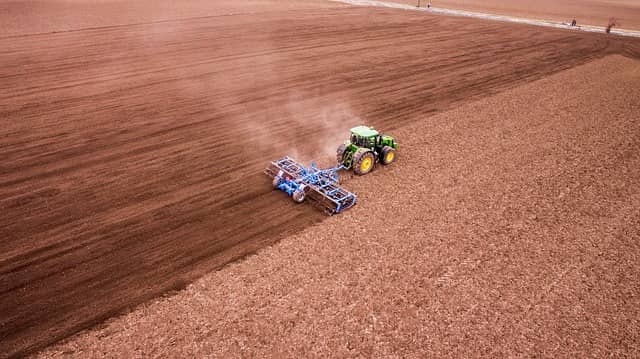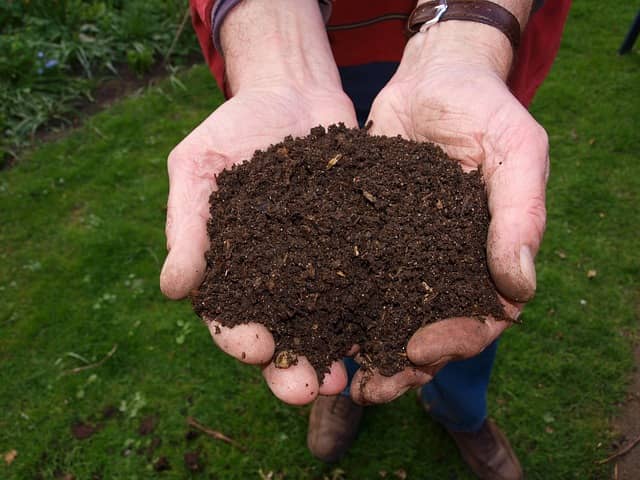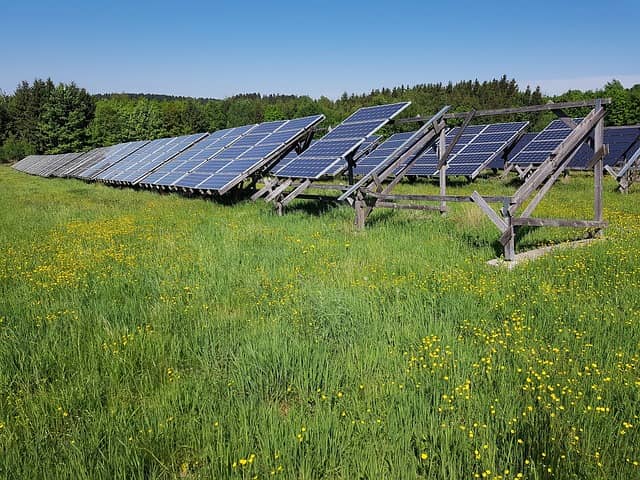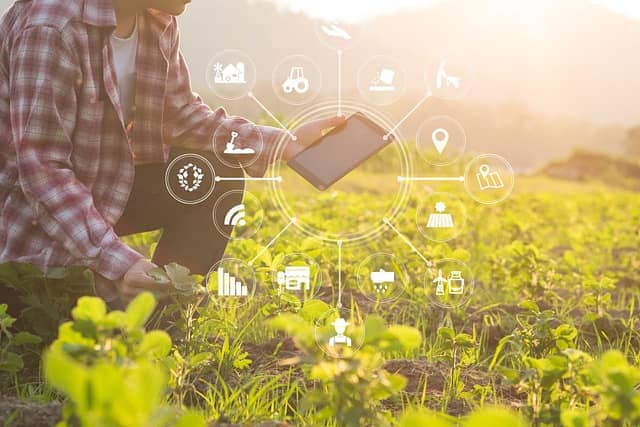According to FAO, by year 2050 , the global population is expected to reach 9.7 billion and big chunk of this growth will be from developing countries. Also the urbanization is expected to reach around 70 percent. Essentially it means that we will have lesser resources of food production to feed a larger population According to estimates, feeding a world population of around 9.7 billion people in 2050 would require raising overall food production by around 70 percent of production levels in the year 2007. Production in the developing countries would need to be almost double. If we add the double whammy of climate change to the mix, then the potential for a catastrophic food crisis in 2050 becomes even more dire.
But before you panic, let’s take a deep breath and consider our options. As Abraham Lincoln once said, “The greatest fine art of the future will be the making of a comfortable living from a small piece of land.” In other words, sustainable farming may hold the key to our survival in the later decades of the 21st century.

What is Sustainable Farming?
So what exactly is sustainable farming? Let’s delve into the concept of sustainable farming and learn more about it.
Though the concept of sustainable farming has been defined in many ways over the period of time, I will stick to the following definition :”Sustainable agricultural/farming system may be defined as a system which incorporates the concepts of resilience and persistence (capacity of a farming system to continue over long periods) and caters many wider ecological, economical and socio-political dimensions.“
Let us make an effort to grasp the meaning of this definition.
Resilience in agriculture refers to the ability of a farming system to withstand and recover from shocks or stresses, such as extreme weather events, pests and diseases, market fluctuations, and other disruptions. One example of resilience in agriculture is the use of crop diversification. Rather than relying on a single crop, farmers can plant a variety of crops with different growing seasons, water requirements, and nutritional needs. This helps to reduce the risk of crop failure due to pests, disease, or weather-related events
Persistence is the capacity of a farming system to continue over long periods in the face of challenges or obstacles. This can involve a range of activities, including soil conservation, water management, crop rotation, and pest control, among others. One example of persistence in agriculture is the practice of crop rotation. Farmers who practice crop rotation alternate between different crops each year, which helps to prevent soil erosion, control pests and diseases, and maintain soil fertility.
Ecological Aspect -The fundamental goals of the ecological aspect of sustainable agriculture are to mitigate the adverse impacts on the environment and public health, make the most of local ecosystem resources, and conserve biodiversity. Furthermore, sustainable agriculture seeks to acknowledge the positive environmental benefits that farming can offer, such as the sequestration of carbon in soils, protection against floods, and biodiversity services
Economic Aspect – From an economic standpoint, the goal is to assess the value of ecological assets and take a longer-term perspective in economic analysis. Additionally, this perspective sheds light on hidden subsidies that encourage the depletion of resources or create unfair competition with other production systems.
Social and Political Aspect – This perspective highlights the social and political dimensions of sustainable agriculture. At the local level, sustainable agriculture is associated with farmer participation, group action, and the promotion of local institutions, culture, and farming communities. This means that farmers should have a say in the decisions that affect their livelihoods, and that local institutions and cultures should be supported and preserved. At the higher level, sustainable agriculture is concerned with enabling policies that target poverty reduction in developing countries and diet management in industrialized countries. This means that policies should be put in place to support sustainable agriculture practices and to ensure that everyone has access to healthy, affordable food.
Now, the question pops up- Why are we advocating for sustainable agriculture over conventional farming?
Demerits of Conventional Farming
Picture a vast field stretching out as far as the eye can see, covered in perfectly uniform rows of crops. This is the image that often comes to mind when we think of conventional farming. While it’s true that conventional farming has led to significant increases in crop production, there are also some serious downsides to this modern agricultural approach.
One of the biggest problems with conventional farming is the heavy use of synthetic chemicals. Pesticides and fertilizers may increase yields in the short term, but they also come with some serious long-term consequences. They can harm soil health, pollute waterways, and even negatively impact public health, with some studies linking pesticide exposure to cancer and other health issues.

Another issue with conventional farming is its reliance on monoculture, or the practice of growing a single crop over a large area. This can lead to soil erosion, nutrient depletion, and increased vulnerability to pests and diseases. In addition, conventional farming practices are often heavily mechanized, requiring large amounts of energy and contributing to climate change.
And let’s not forget about the economic challenges faced by many conventional farmers. With high input costs for things like seeds and chemicals, and volatile commodity prices, it can be difficult for farmers to maintain long-term financial stability.
Sustainable Vs Conventional Agriculture
To give a clear picture, I am providing a tabular comparison between sustainable agriculture and conventional agriculture:
| Category | Sustainable Agriculture | Conventional Agriculture |
| Approach | Environmentally-friendly, socially responsible, and economically viable in the long term. | Maximize crop yields with modern techniques and technologies. |
| Use of chemicals | Limited use of synthetic fertilizers and pesticides. | Heavily reliant on synthetic fertilizers and pesticides. |
| Soil health | Focus on building healthy soils through practices like crop rotation, cover cropping, and reduced tillage. | Often relies on chemical fertilizers and pesticides that can deplete soil health over time. |
| Biodiversity | Emphasis on protecting biodiversity. | Can have negative impacts on wildlife. |
| Water use | Aim to use water efficiently. | Often uses large amounts of water. |
| Energy use | Aim to use energy efficiently. | Often uses large amounts of energy. |
| Waste | Aim to minimize waste. | Often generates significant amounts of waste. |
| GMOs | Generally opposed to GMOs. | Reliant on genetically modified crops. |
| Economies of scale | Smaller scale, diversified farms. | Larger scale monoculture farming. |
| Government subsidies | May not rely on government subsidies. | Often reliant on government subsidies. |
This is not an exhaustive list, but it provides a snapshot of some of the key differences between sustainable agriculture and conventional agriculture.
All of the downsides to conventional farming are prompting many people to look for alternative approaches to agriculture. Sustainable farming practices prioritize environmental sustainability, public health, and long-term farm viability. So the next time you picture a farm, imagine a diverse patchwork of crops, carefully tended to by farmers who are working to create a healthier, more sustainable food system for all of us.
Key Components of Sustainable Farming
I’d like to give you an overview of the key components of sustainable agriculture, so you can understand why sustainable farming is important and why it’s a viable and crucial alternative to conventional farming.
Soil Health

One of the main components of sustainable agriculture is a focus on soil health. Instead of relying on synthetic fertilizers and pesticides, sustainable farmers work to build healthy soils through practices like crop rotation, cover cropping, and reduced tillage. Healthy soils not only support the growth of crops but also promote biodiversity and help mitigate climate change by storing carbon.
Agroecology
Another component of sustainable agriculture is the use of agroecological approaches to pest and disease management. This means using natural solutions like biological controls, crop diversification, and cultural practices to control pests and diseases, rather than relying on synthetic chemicals.
Biodiversity
Sustainable farming also emphasizes the importance of biodiversity. Rather than planting monocultures, sustainable farmers plant diverse crops that support a wide range of wildlife and promote ecosystem resilience. This can include intercropping, companion planting, and other techniques that enhance biodiversity.
Water conservation and management
Sustainable farming practices focus on using water efficiently and responsibly, through techniques like drip irrigation, rainwater harvesting, and water-efficient crop selection. They also prioritize water quality, working to prevent runoff and pollution.
Energy efficiency and renewable energy

Sustainable farmers seek to reduce energy use and greenhouse gas emissions through practices like reduced tillage, cover cropping, and using renewable energy sources like solar or wind power.
Animal welfare
Sustainable farming practices prioritize animal welfare, avoiding the use of inhumane practices like confinement or overuse of antibiotics. They also recognize the importance of integrating animals into farming systems, through techniques like rotational grazing or manure management.
Social Equity
Sustainable agriculture recognizes the importance of community and social equity. It emphasizes fair labor practices, supports local food systems, and prioritizes the needs of farmers and farm communities
Community engagement and education
Sustainable farmers seek to engage with their local communities, educating them about sustainable farming practices and building relationships with consumers through programs like community-supported agriculture (CSA) or farm-to-table initiatives.
Economic viability
Finally, sustainable farming emphasizes the importance of long-term economic viability for farmers. It recognizes that farming is a business and seeks to create systems that support farmers in building resilient, profitable businesses that can sustain them and their communities for generations to come.
Together, these components of sustainable agriculture create a holistic approach to farming that benefits both the environment and society.
Sustainable Farming Practices
Integrated pest management
The practice of Integrated Pest Management (IPM) uses ecosystem diversity to control pests, diseases, and weeds. Pesticides are only used when other options are ineffective.
Integrated nutrient management
·This practice balances the need to fix nitrogen within farm systems with the need to import inorganic and organic sources of nutrients. It also aims to reduce nutrient losses through erosion control.
Conservation tillage or zero tillage
·This practice reduces the amount of tillage, sometimes to zero, to conserve soil and use available moisture more efficiently.
Agroforestry
This practice incorporates multifunctional trees into agricultural systems and involves collective management of nearby forest resources.
Aquaculture

This practice incorporates fish, shrimps, and other aquatic resources into farm systems, such as into irrigated rice fields and fish ponds, and leads to increases in protein production.
Water harvesting in dryland areas
This practice involves harvesting rainwater in dryland areas, allowing for cultivation on formerly abandoned and degraded lands and additional crops grown on small patches of irrigated land.
Livestock integration into farming systems
· This practice involves integrating dairy cattle, pigs, and poultry into farming systems, including using zero-grazing cut and carry systems.
Challenges in Sustainable Agriculture
Sustainable farming may be the way of the future, but the road to getting there is paved with challenges. From convincing traditional farmers to adopt new practices to facing the daunting reality of climate change, sustainable farming requires overcoming some significant hurdles.
Resistance of traditional farmers
One of the biggest obstacles is the resistance of traditional farmers who may be skeptical of new methods or unwilling to break from their usual routine. Convincing them to invest in new infrastructure and technologies can be an uphill battle, but it’s a necessary one to create a more sustainable future.
Cost of sustainable farming practices
Another challenge is the cost. While sustainable farming practices may pay off in the long run, they often require significant upfront investments that many small-scale farmers cannot afford. The resulting lower yields can make it difficult for farmers to justify the expense, especially when they are under pressure to meet the demands of a growing population.
Climate change
And let’s not forget about climate change. Sustainable farming practices that promote soil conservation and crop diversification can help farmers mitigate the risks of extreme weather events, but they also require significant investments in time, resources, and research.
Scaling up
Scaling up sustainable farming to meet the needs of a growing population is also a major challenge. The complexity of sustainable farming systems and their labor-intensive nature can make it difficult to increase production to meet demand.
Policy barriers in sustainable farming
Policy barriers can often limit the ability of farmers to adopt sustainable farming practices. For example, subsidies for conventional agriculture can create a financial disincentive for farmers to switch to more sustainable practices. In addition, regulations around things like land use, water rights, and pesticide use can be difficult to navigate and may limit the ability of farmers to implement sustainable practices.
Emerging trends in Sustainable Farming and its Future
As the world looks towards more sustainable agricultural practices, several emerging trends are shaping the future of farming. These trends are helping to improve yields, reduce environmental impact, and support the livelihoods of farmers around the world.

One of the most exciting trends is the use of precision agriculture. This approach uses technology such as GPS, sensors, and drones to monitor crops and optimize the use of inputs such as water, fertilizer, and pesticides. Precision agriculture can lead to significant reductions in waste and improve crop yields, making it a key tool in sustainable farming.
Another trend is the increasing focus on regenerative agriculture. This approach prioritizes practices that improve soil health and sequester carbon, such as cover cropping, reduced tillage, and crop rotation. Regenerative agriculture can lead to healthier soil, reduced greenhouse gas emissions, and increased resilience in the face of climate change.
In addition, there is a growing interest in alternative protein sources, such as plant-based or lab-grown meat. These products require fewer resources to produce and have a lower environmental impact than traditional animal agriculture, making them a key player in sustainable farming.
Finally, there is a trend towards more localized food systems. By focusing on producing food locally, farmers can reduce transportation emissions and increase the resiliency of their communities. This can lead to more diverse diets and more secure food supplies, even in times of crisis.
Sustainable farming also creates new opportunities for farmers to sell their products at premium prices. Consumers are increasingly interested in locally produced, sustainably grown food, which creates new markets for small-scale farmers. Additionally, sustainable farming practices can help farmers access new markets for organic or sustainably grown crops.
In conclusion, the future of sustainable agriculture is bright, with emerging trends, new opportunities, and a need for support from all stakeholders. Supporting sustainable agriculture will be critical to realizing these opportunities. Governments and other stakeholders must invest in research and development of new technologies, infrastructure, and policy changes that promote sustainable agriculture. This will require a coordinate effort from all stakeholders, including farmers, policymakers, researchers, and technology developers. By working together, we can create a future where sustainable agriculture is the norm, benefiting both people and the planet.
